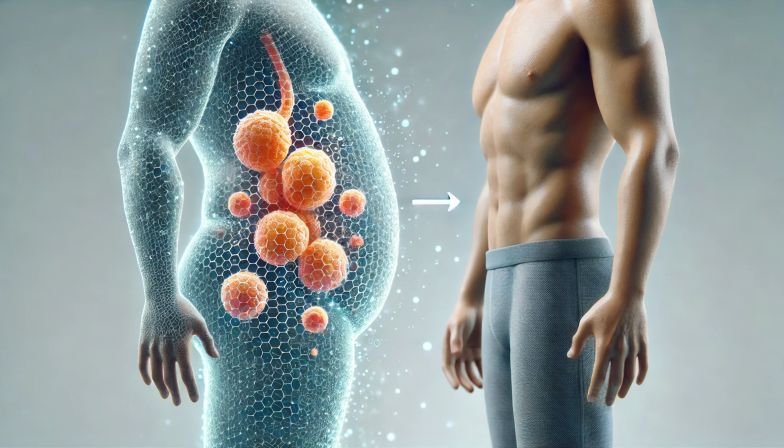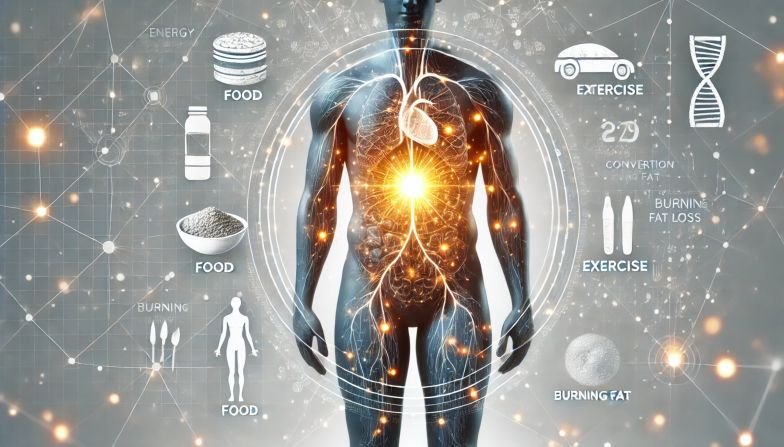Losing weight isn’t just about eating less and exercising more—it’s about understanding how fat loss actually works on a scientific level. Many people struggle with weight loss because they follow fad diets, misinformation, and quick fixes that don’t align with how the human body truly burns fat.
If you’ve ever wondered:
- What really happens when we lose fat?
- How does metabolism affect weight loss?
- What’s the best way to burn fat efficiently?
Then this expert-backed guide will answer all your questions! Let’s break down the science behind fat loss and how you can lose weight effectively and sustainably.
What Happens When You Lose Fat?

The process of fat loss is biochemically complex but can be summarized into three key steps:
- Caloric Deficit – You consume fewer calories than your body needs, forcing it to use stored energy (fat).
- Lipolysis – Fat cells release stored triglycerides, which get broken down into fatty acids and glycerol for energy.
- Oxidation – These fatty acids are transported to the mitochondria and converted into ATP (energy), eventually leaving the body as CO₂ (carbon dioxide) and water through breathing, sweating, and urination.
Surprising Fact: Most fat leaves the body through your breath! Studies show that 84% of lost fat is exhaled as carbon dioxide, while the remaining 16% exits as sweat and urine.
The Role of Metabolism in Fat Loss

What is Metabolism?
Metabolism refers to all the biochemical processes that keep you alive, including:
- Basal Metabolic Rate (BMR): Calories burned at rest (breathing, organ function).
- Thermic Effect of Food (TEF): Calories burned digesting and processing food.
- Physical Activity: Calories burned through movement and exercise.
Factors Affecting Metabolism:
Several factors influence your metabolism, including:
- Age: Metabolism tends to slow down with age due to loss of muscle mass and hormonal changes.
- Gender: Men generally have a higher BMR than women due to greater muscle mass.
- Muscle Mass: More muscle increases your BMR, leading to higher calorie burn even at rest.
How to Boost Metabolism for Fat Loss
To lose fat effectively, you need to increase energy expenditure. Here’s how:
- Strength Training – Builds lean muscle, which burns more calories at rest.
- High-Intensity Interval Training (HIIT) – Creates an “afterburn” effect, increasing calorie burn post-exercise.
- Protein-Rich Diet – Boosts the Thermic Effect of Food (TEF), requiring more energy for digestion.
- Staying Active – NEAT (Non-Exercise Activity Thermogenesis) like walking, fidgeting, and taking stairs adds up.
Best Ways to Lose Fat Scientifically

Here are some of the best ways to lose fat scientifically
1. Create a Sustainable Caloric Deficit
A 500-750 calorie deficit per day leads to a safe 1-1.5 lbs weight loss per week. Extreme deficits slow metabolism and cause muscle loss.
2. Focus on Strength Training Over Just Cardio
Strength training increases muscle mass, which keeps your metabolism higher. Cardio burns calories, but strength training makes fat loss long-term.
3. Prioritize Protein in Your Diet
Protein helps preserve muscle, reduces hunger, and has the highest thermic effect of all macronutrients. Aim for 0.8-1g per pound of body weight.
4. Get Enough Sleep
Poor sleep increases cortisol (stress hormone), leading to fat storage—especially in the belly. Aim for 7-9 hours of quality sleep per night.
5. Manage Stress Levels
Chronic stress leads to overeating and hormonal imbalances. Activities like meditation, deep breathing, and nature walks help keep stress in check.
Debunking Common Fat Loss Myths
Myth 1: You Need to Cut Out All Carbs to Lose Fat
Truth: Carbs are an essential energy source. Focus on complex carbs (oats, brown rice, sweet potatoes) instead of refined sugars.
Myth 2: Sweating More = Burning More Fat
Truth: Sweat is just water loss, not fat loss. Fat is burned through calorie expenditure, not sweat levels.
Myth 3: Fat Turns into Muscle
Truth: Fat and muscle are two different tissues. Fat is burned for energy, while muscle is built through protein synthesis and resistance training.
Sustainable Fat Loss Strategies
- Lifestyle Changes: Focus on making long-term changes to your eating and exercise habits rather than seeking rapid results. This includes adopting a balanced diet and regular physical activity.
- Creating a Sustainable Plan: Develop a balanced eating plan that includes a variety of foods and regular physical activity. Consider meal prepping and planning to stay on track.
- Mindfulness and Behavior Change: Incorporating mindfulness practices can help you develop a healthier relationship with food and improve adherence to your fat loss goals. Techniques such as mindful eating can prevent overeating.
Final Thoughts
Fat loss is a scientific process—not a mystery. By understanding metabolism, energy balance, and proper nutrition, you can lose weight efficiently without fad diets or extreme measures.
- Eat a balanced, high-protein diet
- Lift weights to preserve muscle
- Stay active throughout the day
- Sleep well and manage stress
Apply these evidence-based strategies, and you’ll burn fat effectively while maintaining a healthy and sustainable lifestyle.
Suggested reads: BetterThisWorlding.com: A Deep Dive into Its Mission, Features, and Impact










